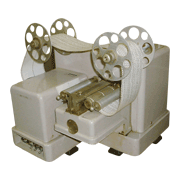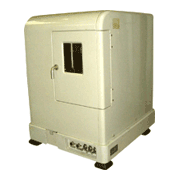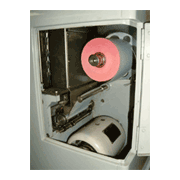This tape reader and tape punch expanded the previous 60-channel tape to 72-channel (36-channel x 2). They were developed for the FACOM 128A (completed in 1956) of Fuji Tsushinki Manufacturing Corporation (currently Fujitsu), a machine which increased arithmetic speed by 5 times based on results obtained with the FACOM 100, Japan's first practical relay-based computer. This tape reader and punch were used not only for manual input of numeric data and instruction data, but also played a role as a memory device when the reader and punch were used as a pair. At the time, a relay memory unit had been developed for the FACOM 100, and a mechanical memory unit (based on the principle of the cross-bar switch used in exchanges) had been developed for the FACOM 128A (completed in 1956). However, in the case of long-term storage or lack of memory capacity, manually generated numerical tapes were read into the computer with the tape reader, and then new numerical data processed by the computer was punched into tape with the punch to create a new numerical tape. By using that tape as input for the next processing stage, tape could be used as a memory device with theoretically infinite capacity.
Tape was also used for loading instructions with the FACOM 100, but with the FACOM 128, a special-purpose instruction card reader (called the "Fuji Card Reader") was used in addition to the 72-channel tape reader.
This 72-channel tape reader and tape punch were also used for machines such as the FACOM 128B and FACOM 138, but they surrendered that role to IBM cards and magnetic tape, which had superior data capacity and higher speed. No special tape readers like the 60-channel and 72-channel type were subsequently developed.




